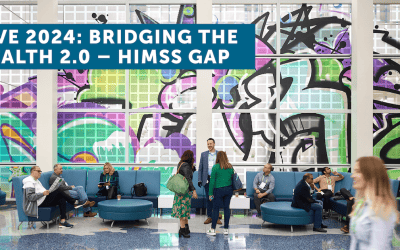
Putting each of these initiatives right up front in the funding cycle makes a hell of a lot of sense to us.
First, dedicating $598M to the Health Information Technology Extension Program (HITEP) for the establishment of some 70+ extension centers, as well as a national Health Information Technology Research Center (HITRC), which is separately funded at $50M, will put in place the needed infrastructure of technical advisers to assist physicians in adopting EHRs and insuring that their deployment will support meaningful use, well at least that is the plan, which is much easier said then done. We still wonder where the feds and these extension centers will find the necessary skilled staff to man these extension centers once this market begins to heat up.
Some quick facts and figures on HITEP:
- Only non-profit institutions are eligible to receive funding.
- These extension centers are expected to serve 100,000 or more physicians with the primary target being small physician practices (>10physicians).
- Funding floor is $1M, and the ceiling is $30M.
- HITRC will receive separate funding of $50M and will basically become a clearinghouse of best practices for implementation adoption and us of HIT.
- Grants will be awarded on a rolling basis beginning with 20 awards in Q1, 2010, another 25 in Q3,’10 and the balance in Q4’10.
- Initial funding is expected to support the first two years of an extension center. By 2012, HHS is expecting these centers to be pretty much self-sufficient, though there will be an additional $45M to distribute in years 3 and 4. If the Land Grant and Sea Grant programs are of any guidance, these HIT extension centers will not be self-supporting – it just doesn’t happen. Trust me, I worked in the Sea Grant program for several years.
These regional extension centers will support health care providers with direct, individualized and on-site technical assistance in:
- Selecting a certified EHR product that offers best value for the providers’ needs;
- Achieving effective implementation of a certified EHR product;
- Enhancing clinical and administrative workflows to optimally leverage an EHR system’s potential to improve quality and value of care, including patient experience as well as outcome of care; and,
- Observing and complying with applicable legal, regulatory, professional and ethical requirements to protect the integrity, privacy and security of patients’ health information.
Second, dedicating $564M to assist states in establishing RHIOs is logical, if not critical, if indeed we want to have true care coordination. Besides, if the feds are going to demand that one of the core precepts of meaningful use be information sharing, then it is the responsibility of the feds to facilitate building the infrastructure to make it happen. Distributing $564M to States or State Designated Entities (SDE) is quite a boat load of money to make this happen, hopefully it will be spent wisely and not result in more cobbled together RHIOs that live from one grant to the next and have no sustaining business model. Maybe they could make a condition of receiving a grant – a clear business plan that shows a self-supporting entity within say three years of go-live.
Some quick facts and figures on the HIE Grants:
- Objective is to “develop and advance information sharing across the healthcare system” in a given State, or among States and an even broader vision to support the NHIN.
- States will be required to match grants in 2011
- HHS is expecting to distribute ~50 awards, only one allowed per State.
- Funding floor is $4M and the ceiling is $40M.
- Critical dates (proposed): Letter of Intent due Sept. 11, Application Oct. 16, Awards, Dec. 15, Program Start, Jan 15, 2010.
- Program is anticipated to last four years. Over the course of the four years, HHS will have certain milestones that the RHIOs must meet. Not surprisingly, these milestones are broken into three phases with the likely intent of matching the three tiers of meaningful use.
- HHS is targeting to have these RHIOs fully operational prior to 2015 when Medicare penalties kick-in for those not demonstrating “meaningful use”.
- RHIO performance will be monitored quarterly with entities evaluated on their ability to support information sharing.
And what information sharing will these RHIOs support?
Glad you asked and here is your list of minimum requirements (note, these align directly to the meaningful use recommendations that were approved on July 16th)
- eClaims and eligibility checking (certainly the payers had a role in getting this in there),
- Electronic order and receipt of labs and test results,
- Public health reporting,
- eRx, including refill requests,
- Medication fill status and med history,
- Quality reporting and
- Clinical summary exchange.
All in all quite a tall order considering most RHIOs have not gotten much further than distributing labs and test results. But really what choice does ONC and HHS have? Congress, in its infinite wisdom, has put into legislation that some $36B+ must be spent in a very short time period to get the healthcare sector into the digital age. The aggressive schedule put forth by this legislation leaves HHS with little choice but to charge ahead. Considering te circumstances, HHS/ONC are being about as thoughtful as one could expect. Let’s hope that when it comes to actually executing on these initiatives the measured approach taken to date continues.




John, just want to point out that each center is supposed to serve at least 1,000 docs, and that the whole system is supposed to support over 100,000 primary care providers, instead of each center supporting 100,000 as you note. All the same, as usual you turn out the best summaries out there.
Great catch Brian. Had some major problems with putting this post together beginning with the HHS healthIT site going down last night and then today WordPress giving me fits. Hopefully, this error will be the only big one – keeping fingers crossed as I say this.
And thanks for the good words, Always Appreciated!
John:
Thank you for your clear and concise discussion of these grants. I think I understand them now for the first time.
Ooops. Bad email address. Fixed now.
The governmental site that I had seen showing instructions for grant applications seems to be missing certain links at present.
Are you aware of a link to the application instructions?
Thanks
Eric
Good news, hope this will help us to get the Olympics!